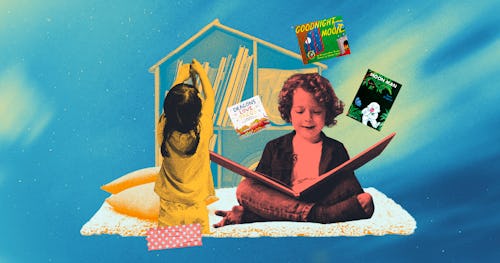
Families want great things from children’s picture books — our hopes run so high because the promise is so great: the memorable joy of a shared experience on the page, the stories that have the power to reshape how we see the world. But the intended audience here is almost never the person buying the book, which makes judging a picture book by its cover especially tricky. Parents and grandparents are left to search in the dark, making all kinds of assumptions as to what kids will enjoy, and more often what they think kids should enjoy.
Truly great children’s books succeed because they speak honestly and directly to children’s experiences and imaginations. It’s no easy feat, but when it’s pulled off, the results are nothing short of magic. Think about classics like Where the Wild Things Are or The Snowy Day — stories that captivated you as a child and whose odd power doesn’t wear off when you can pick them up again as an adult. This is how kids think and feel. Parents know because we were once kids. Kids just know.
Using that criteria, we’ve assembled 75 of the greatest children’s picture books of all time, surveying our fellow editors and parents, and asking some of the most talented authors and illustrators working today — Adam Rubin (Dragons Love Tacos), Ron Barrett (Cloudy With a Chance of Meatballs), Jason Chin (Watercress), and Oge Mora (Thank You, Omu!) — to help us out by sharing their own favorites.
While this list isn’t anywhere near exhaustive, it is authoritative: Every book on this list is worth adding to your kid’s library (or checking out from your local library). Rather than ranking titles, we’ve presented them in alphabetical order, by title — there’s no hierarchy of greatness here, just 75 essential, timeless tales for young kids.
10-Button Book by William Accorsi (1999)
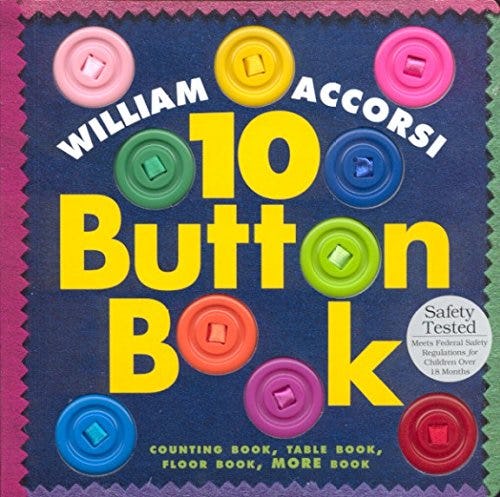
William Accorsi, who died in 2021, led two lives united by one passion: to make art. On the one hand, he was the prolific creator of erotic wooden sculpture. On the other, he was the author of The 10 Button Book, a best-selling (and deservedly beloved) board book featuring colorful strings each with a button attached. Blurring the line between what play therapists call “manipulatives” and a traditional book, it works both as a simple counting story — short rhymes accompany bright cut felt illustrations — and as an salutary motor skills activity. —Joshua David Stein
Get 10-Button Book here.
13 Words by Lemony Snicket and Maira Kalman (2010)
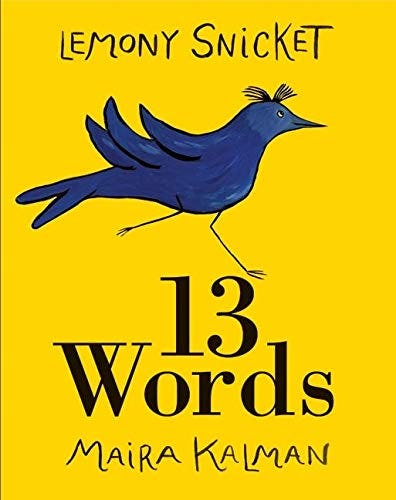
The deceptively simple title of 13 Words suggests a book that will teach children some basic words and their meanings. This is true, but did you expect that a Pre-K kid will suddenly know the meaning of “haberdashery” and “despondent”? Calling this book brilliant would be oddly underselling it. Calling it whimsical would make it seem like it was a joke. The greatness of the 13 Words is probably best relayed by simply reading it, but if you need convincing, here’s one detail: A lot of creatures eat cake in this book, and while that’s great, they’re still a little despondent in the end. You can have your cake, eat it too, sing a song about it, and visit a baby that sells hats, and still not be entirely sure about the meaning of life. Luckily, Maira Kalman’s amazing illustrations will make you want to sing about it. —Ryan Britt
Get 13 Words here.
The Adventure of Taxi Dog by Debra and Sal Barracca, illustrated by Mark Buehner (1990)
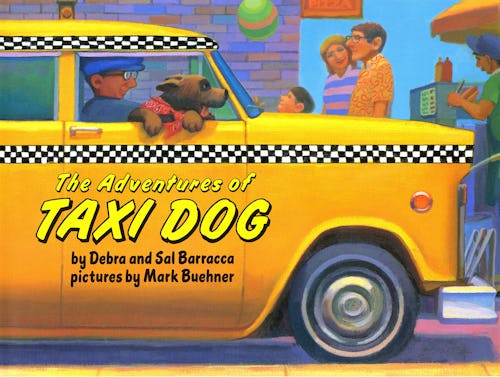
Debra and Sal Barracca’s 1990 debut tells the story of Maxi, a stray dog who finds his way into a taxi and into the good graces of its driver, Jim. An ode to New York City cabs and New York City cabtakers, the book is unparalleled in the playful addictiveness of its language. Each line repeats the cadence of a limerick. “My name is Maxi. I ride in a taxi around New York City all day. I sit next to Jim. I belong to him. But it wasn’t always this way.” The illustrations, by Mark Buehner, are precise and colorful with lots of Easter eggs and intratextual callbacks which reward multiple readings. —JDS
Get The Adventures of Taxi Dog here.
Alexander and the Terrible, Horrible, No Good, Very Bad Day by Judith Viorst (1972)
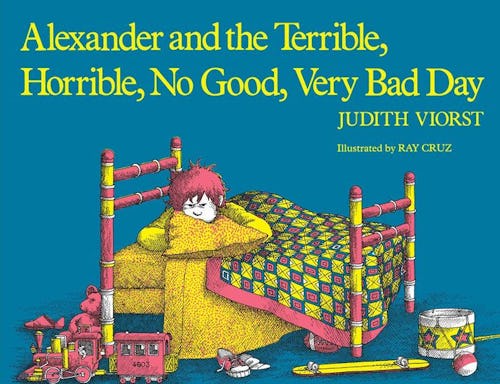
We pick up Alexander mid-rant in Judith Viorst’s 1972 classic. “I went to sleep with gum in my mouth and now there’s gum in my hair....” he begins, and the calamities don’t stop. Alexander suffers all sorts of petty misfortunes in school and at home, like some sort of pre-adolescent Job. Unforgettably illustrated in precise black and white with color accents by Ray Cruz, Viorst’s book reads like a Borscht Belt comedian’s rant — think a 3rd-grade Henny Youngman — with an ever so slightly redeeming ending: the day finally ends. What’s wonderful here is the utter lack of redemption. Some days just suck. Thankfully, some books about days that suck are a delight. —JDS
Get Alexander and the Terrible, Horrible, No Good, Very Bad Day here.
Adam Rubin’s Top 5 Children’s Picture Books

Adam Rubin is the critically acclaimed bestselling author of some of the funniest, sharpest picture books written for kids. His books (the latest are The Ice Cream Machine and Gladys The Magic Chicken) have sold more than 5 million copies worldwide — his Dragons Love Tacos is included in our list of the greatest children’s picture books. “It's hard to narrow down the vast and wonderful universe of children's books to just five favorites,” says Rubin. “If you asked me on a different day, I might have a totally different list.”
‘The Stinky Cheese Man and Other Fairly Stupid Tales’ by Jon Scieszka, illustrated by Lane Smith (1992)
This book changed my perception of what a kids book could be. Jon Scieszka addressed the reader directly and never coddled them. Lane Smith drew dark, hilarious pictures that weren't cute at all. They broke the traditional format of a story book in so many inventive ways, Little Red Hen yakking before the title page, the table of contents squashing Chicken Little, they even messed with the marketing copy on the back cover. You could tell these guys had a blast making this book together. It made me want to try to do the same thing.
‘The Klutz Book of Kids Shenanigans’ by John Cassidy and Klutz Inc. (1992)
This was the first book I read that made me feel like I was "in" on something. Jon Cassidy struck that perfect avuncular, semi-conspiratorial tone, like he was sharing the hilarious secret that authority figures are really just making up all the rules as they go along. I suspected this to be true from a very young age, but it was deeply satisfying to receive printed confirmation.
‘The Mysteries of Harris Burdick’ by Chris Van Allsburg (1984)
This book features a dozen or so lush illustrations paired with a single line of text. This book set my imagination on fire. It was so wildly evocative. What a thrill that Chris Van Allsburg, acclaimed author/illustrator, had given me permission to make up stories of my own. I read this book in third grade and as far as I can remember, it was my first invitation to try creative writing.
‘Round Trip’ by Ann Jonas (1990)
A simple story about driving into the country from the city. It's illustrated in a stark black-and-white style that magically transforms into the opposite narrative when the book is turned upside down. Read it reversed and the narrator drives back to the city from the country. And, of course, you can keep going round and round. When I was researching unusual design concepts to use for Robo-Sauce, this book was a big inspiration.
‘The Book of Mistakes’ by Corinna Luyken (2017)
This is my favorite picture book from the last five years. It's thoughtful and beautiful without feeling twee and it's one of those stories that touches on a deep philosophical truth in a way that feels impossibly easy to understand. It's a great gift for a six year old but it's an even better gift for a twenty year old. Heck, I think I should go re-read it myself right now.
A Big Mooncake for Little Star by Grace Lin (2018)
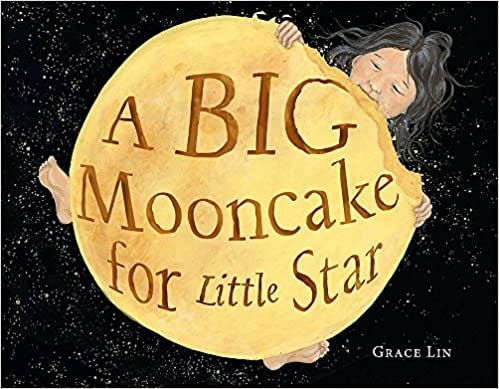
For young kids, the domestic always happens on a cosmic scale. Grace Lin gets at this fuzzy truth perfectly and movingly in A Big Mooncake for Little Star (an homage, in part, to Blueberries for Sal). The book’s endpapers show Little Star standing in her pajamas on a chair in the kitchen baking with her mother. When the story starts in earnest on the first page, Little Star’s mother hangs a big round mooncake, fresh from the oven, in the night sky and tucks Little Star into bed with instructions not to eat any of it. Little Star can’t resist just a tiny bite… and then another. Night after night she zooms up to the velvety black sky, nibbling at the luminous mooncake, which of course begins to wane, leaving a twinkling trail of crumbs around it. Lin’s story does so much — and all of it beautifully — offering an original fable about the phases of the moon. —Nadia Aguiar
Get A Big Mooncake for Little Star here.
Blueberries for Sal by Robert McCloskey (1948)
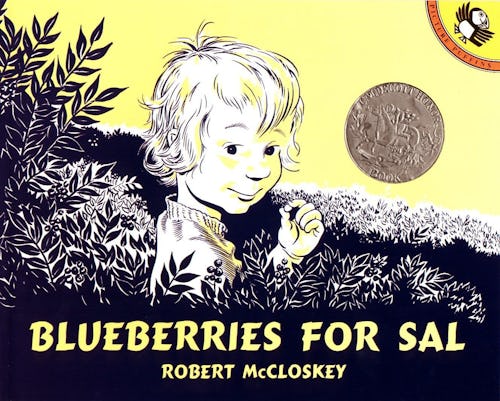
McCloskey’s 1948 classic is a simple tale of two blueberry-picking expeditions: On one side of a windswept hill in Maine, Sal and her mother are picking blueberries to can for the winter; on the other side of the hill a mother bear and her cub are foraging for blueberries to fatten themselves up for the winter. Distracted by eating blueberries, Sal and the cub unwittingly swap mothers; when the mixup is discovered, the cold shock of finding oneself separated from one’s mother (or one’s child) registers on the page — but it’s brief and unsensational. The two mothers find their offspring and the peaceful symmetry of the two families is restored. It’s the gentlest of stories, turning a crisis — separation in the wilderness — into a quietly affirming little adventure. The illustrations are simple but expressive: the duotone palette shifts from bright yellow sunlight to the cool midnight-blue of shadowy fir trees and the bears’ dark fur, and you can almost feel the sun on Sal’s curls. —NA
Get Blueberries for Sal here.
The Book With No Pictures by BJ Novak (2014)
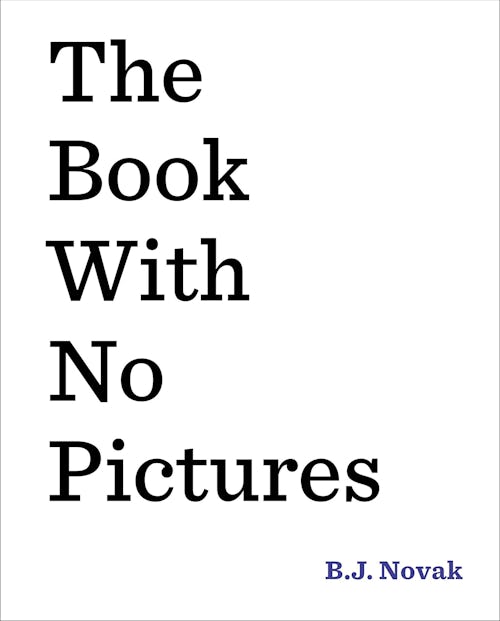
Celebrity-written children’s books are a relatively recent scourge upon the industry. Just because you’re famous doesn’t a children’s book author you make. Except, as it happens, in the case of The Book with No Pictures by BJ Novak, late of The Office. The book doesn’t lie. There are no pictures. But there is a premise, a strong one: that one must read aloud what is written. And so the reader — the parent — is forced to mutter things like, “My only friend in the world is a hippo named Boo Boo Butt” as well as various and sundry onomatopoetic ejaculations like Ggluurr-ga-wacka and Badooongyface. Even writing those words are fun so imagine the joy in reading them aloud. —JDS
Get The Book With No Pictures here.
Bread and Jam for Frances by Russell Hoban, illustrated by Lillian Hoban (1964)
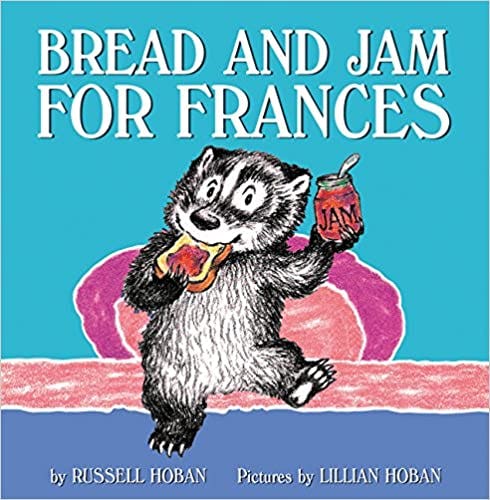
One of a series by Russell and Lillian Hoban, Bread and Jam for Frances is about a picky eater — a young badger named Frances — and a bit of deft parental subterfuge to get her to have a more varied diet. Its genius lies in how faithfully both children and adults feel it describes their experience: Kids identify with Frances’s shifting revulsion to certain foods, such as “quivery eggs,” and long-suffering parents relate to Frances’s mother and father’s desire to have her eat something other than—sigh—bread and jam. But the story doesn’t push an adult agenda. Frances’s parents let her run her little experiment and even facilitate it for her, serving her only bread and jam until she’s ready to rejoin the larger feast: By the end, Frances tucks into a lavish lunchtime spread of black olives, a lobster salad sandwich, a tangerine, plum, and cherries, all impeccably set on a paper doily with a tiny vase of violets. Even the detail of the pepper sprinkled from a tiny cardboard sleeve is exquisite. —NA
Get Bread and Jam for Frances here.
Brown Bear Brown Bear, What Do You See? by Bill Martin Jr., illustrated by Eric Carle (1967)
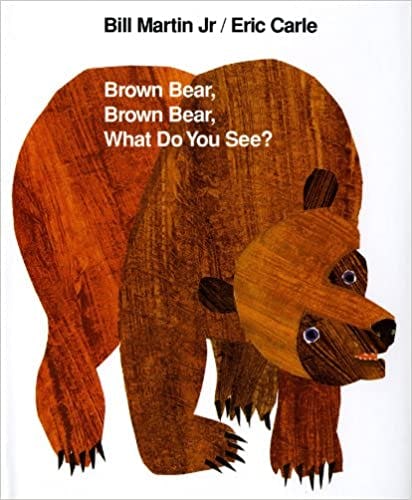
The incantatory rhythm of this deceptively simple story has transformed generations of small children into readers. The book asks different animals (a blue horse, a purple cat, a red bird) what they see, and the animals answer is unfailingly that they’re seen. That’s pretty deep! Packed into that simple, repetitive loop (“Blue Horse, Blue Horse, What do you see?” / “I see a green frog looking at me.”) are the kinds of big ideas — identity, independence, interdependence, perception — for which young kids have a voracious appetite, so parents should expect to ride this loop many, many, many times. The animals are big, barely contained within the margins: a giant purple cat, tail high, paw lifted; a bright yellow duck whose neck curves around to see the reader. —NA
Get Brown Bear Brown Bear, What Do You See? here.
The Butter Battle Book by Dr. Seuss (1984)
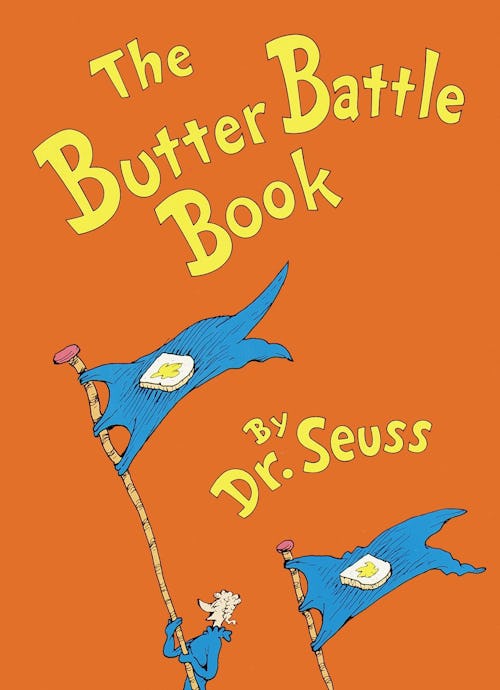
Dr. Seuss scholars love to point out that this book was written specifically about the Cold War, and how the arms race between the US and the USSR could spiral out of control. But, arguably, children then, and now, don’t really care about the Cold War, and the power of The Butter Battle Book is so much broader than one specific allegory. Essentially, two nations can’t agree on how toast should be buttered, a neverending war ensues. Granted, in real life, some wars are fought over who controls the butter, rather than how you use it. But, the idea of trying to destroy someone over an ideological — and arbitrary choice — is obviously something that happens in real life all the time. Unlike some of Theodor Geisel's more on-the-nose books, The Butter Battle Book is great because there’s no clear lesson, except, of course, that people can be shockingly narrow-minded. —RB
Get The Butter Battle Book here.
Caps for Sale by Espyhr Slobodkina (1938)
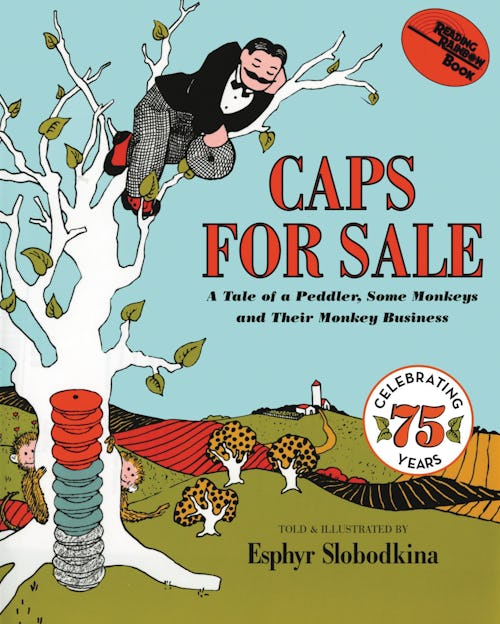
Caps for Sale is an exceedingly simple parable and an exceedingly wise one. Born from the mind of Espyhr Slobodkina, a Russian-born abstract artist, the story traces a peddler selling caps. His caps are stolen by monkeys, obviously, who mindlessly ape the peddler’s actions. His raving and ranting is useless until, in a fit of pique, he throws his own hat to the ground. The monkeys follow suit. The language is plain and the illustrations gently abstracted. (They are actually collages.) But this simplicity is one reason for more than 75 years, the book endures as a classic. —JDS
Get Caps for Sale here.
Cloudy With a Chance of Meatballs by Judi Barrett, illustrated by Ron Barrett (1978)
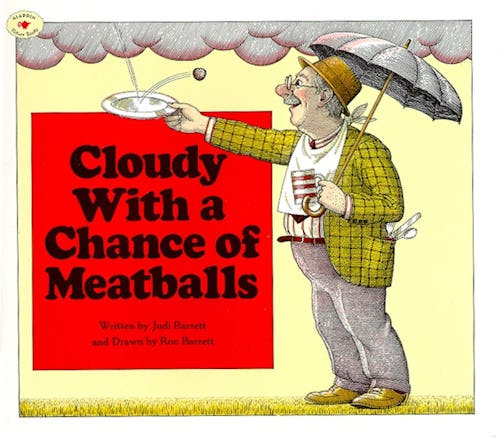
Long before it was a Sony animated feature, Cloudy with a Chance of Meatballs was a precisely told and beautifully illustrated book by Judi and Ron Barrett. (Ron illustrated; Judi wrote.) Cloudy with a Chance of Meatballs is a strong title and the story lives up to it. In the town of Chewandswallow, the meteorology is edible. Cream cheese, donuts, spaghetti, hot dogs rain from the sky. What starts off as a dream turns into a nightmare of both personal health and public safety. A dream-like text that, like the best of children’s literature, chases the fanciful until the darker implications are revealed, Cloudy is easy to swallow but offers plenty of food for thought too. —JDS
Get Cloudy With a Chance of Meatballs here.
Corduroy by Don Freeman (1968)
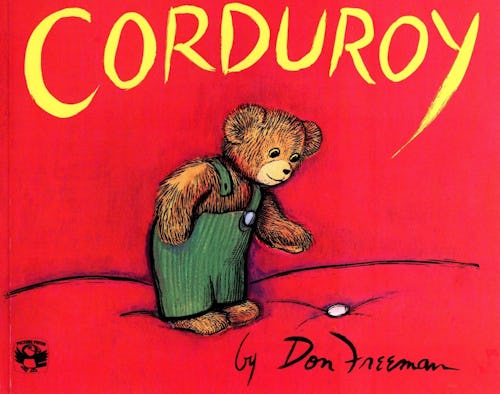
Don Freeman’s enduring tale of a bear who is missing a button on his overalls has remained a classic for a reason. Every child has wanted a toy they can’t immediately have, of course, but not every magical toy story focuses so keenly on capitalism and aesthetics. The titular teddy bear Corduroy isn’t purchased by Lisa’s mother because of money, but on top of that, Corduroy’s overall worth is called into question because of that pesky missing button. The adult is only seeing the world in terms of costs and benefits. The little girl is just seeing things in terms of love. Who are we sewing our missing buttons back on for? Ourselves? Or are we just trying to conform? Corduroy isn’t necessarily asking these questions, but its sweet ending suggests that if children are capable of tolerance in the face of so-called “imperfections” maybe adults can rethink their worldview, too. —RB
Get Corduroy here.
The Day the Crayons Quit by Drew Daywalt, illustrated by Oliver Jeffers (2013)
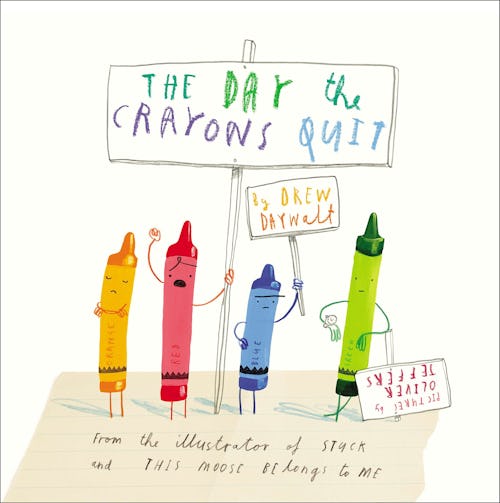
Framed as a series of hand-written letters to a kid from each of his crayons, the book is a comic airing of grievances about that subject dearest to children’s hearts — injustice. Popular blue crayon complains he’s so short and stubby from overuse that he can’t see out of the box. Diplomatic green congratulates Duncan on “a very successful coloring things green career so far” before appealing to him to arbitrate the argument between orange and yellow, who are no longer speaking to each other due to a disagreement about who is the rightful color of the sun. And so on. Children love this book because the crayon’s voices feel so much like their own — capturing their powerful outrage as they argue about what’s fair and what’s not to adults. In a clever and empowering twist, it's the actual kid, Duncan, who assumes the role of adult, smoothing things over and making everyone happy again. —NA
Get The Day the Crayons Quit here.
Oge Mora’s Top 5 Children’s Picture Books

Oge Mora’s stories and vibrantly collaged illustrations have drawn critical acclaim and a dedicated following among young readers. Her 2018 book, Thank You, Omu! — featured on this list of the greatest children’s picture books — was a Caldecott Honoree as well as a recipient of Coretta Scott King/John Steptoe New Talent Award and the Ezra Jack Keats Book Award. Both Thank You, Omu! and her 2019 followup Saturday were selected as the best of the books of the year by reviewers and librarians nationwide.
‘Chicka Chicka Boom Boom’ by Bill Martin Jr. and John Archambault, illustrated by Lois Ehlert (1989)
One of my favorite memories as a kid was my mother reading Chicka Chicka Boom Boom to me and my sister. Since my sister's name is Chika, my mom's version was titled "Chika Chika Boom Boom" and it was equally hilarious and delightful. The vivid collages by Lois Ehlert perfectly complement the bouncy rhythm of Bill Martin Jr. and John Archambault's text. Chicka Chicka Boom Boom (or in my case “Chika Chika Boom Boom”) was — and remains — the perfect read aloud.
‘The Snowy Day’ by Ezra Jack Keats (1962)
Like so many around the world, I too was taken in by Keats' classic tale as a child. From the bright red of Peter's snow suit to the playful pinks and blue that paint the snow, in The Snowy Day Keats masterfully reveals the simple joys of childhood.
‘Tar Beach’ by Faith Ringgold (1991)
As a young girl I related so much to Cassie, the protagonist of this book. She lives in a city, I lived in a city. She has brown skin, I have brown skin. And we both would love to fly all across our neighborhood, carried by stars. In this book, Cassie does just that and discovers the magic of her neighborhood below. Just thinking of this beautiful colorful book makes my heart soar.
‘The Lion and the Mouse’ by Jerry Pinkney (2009)
It's hard to choose one book by Jerry Pinkney because so much of his work could be on this list, but for me, The Lion and the Mouse exemplifies why his work is so beloved. Pinkney's rich and meticulous watercolor paintings breathe new life into the classic fable. Every time I look at this nearly wordless book, I am not only captivated by the majestic lion on the cover, but also by Pinkney's ability to let the images speak what words cannot.
‘Strega Nona’ by Tomie DePaola (1975)
Tomie DePaola is one of my favorite illustrators of all time and has had a large impact on my writing and work. There is a warmth to his world and characters that I have always endeavored to convey in my own stories. In this particular tale, Strega Nona, an elderly woman, has a magic pasta pot that gets her helper Big Anthony in a bit of trouble with the neighborhood. But as she always does, Strega Nona has the perfect solution. Any book you read by Tomie DePaola is guaranteed to make you laugh or at least crack a smile, and Strega Nona exemplifies this in spades (of pasta).
Days With Frog and Toad by Arnold Lobel (1970)
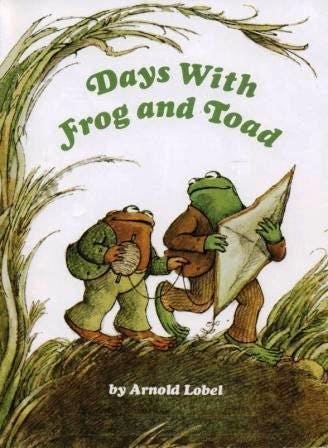
This is surely one of the loveliest children’s series written about friendship, but also one of the richest about inner life. Frog and Toad have ordinary adventures — cleaning a messy room, launching a kite on a windy day — and sometimes just sit together quietly, thinking their own thoughts. That’s what’s so unusual about Lobel’s tender duo: the space given to the parallel private experiences that are such a big part of true friendship. Misunderstandings spun into larger crises inside one mind are soon soothed by the other’s presence; plots often hinge on inventive (often unseen) acts of kindness toward each other. Moods shift like clouds — boredom, joy, contentment give way to more complex, nuanced states that kids don’t generally get credited with understanding but clearly do: anxious self-doubt, patience with another’s funny requirements, and how wonderful it is to be alone together with a friend, sitting, teacups rattling, after the cozy thrill of having scared each other with a ghost story. —NA
Get Days with Frog and Toad here.
Dragons Love Tacos by Adam Rubin, illustrated by Daniel Salmieri (2012)
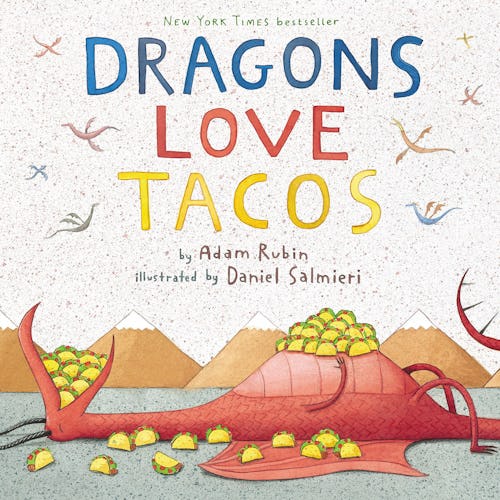
When you read a children’s book a thousand times, you become exquisitely attuned to the rhythm of the language. It’s rare that a book contains no stutters or false notes. But Dragons Love Tacos, which announced writer Adam Rubin and illustrator Daniel Salmieri as the wunderkinds of children’s literature when it came out a decade ago, rings true the whole way through. Told as part apostrophe to dragons and part direct address to a kid who is inviting dragons to his taco party, the text is just a celebration of the silly, incantatory world of imagination and spicy toppings-hating fantasy creatures. —JDS
Get Dragons Love Tacos here.
The Enormous Crocodile by Roald Dahl, illustrated by Quentin Blake (1978)
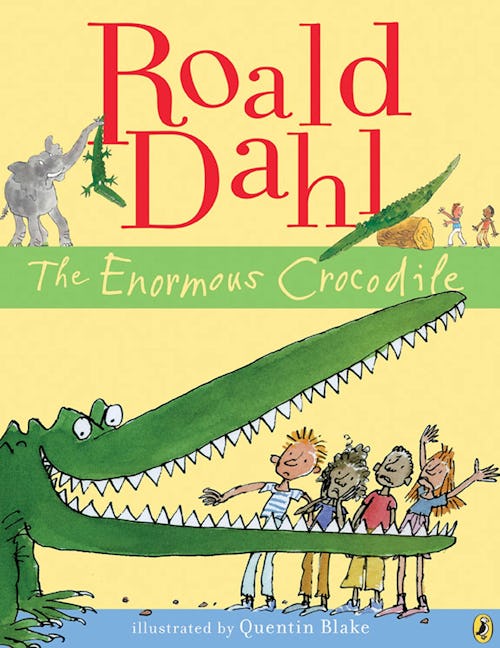
Devious, dark-hearted, and with a bad case of the munchies, this insatiable green villain tramps through the jungle toward town in search of unsuspecting children to gobble. As always with Dahl, the impulse is deliciously macabre (as delicious, perhaps, as the children the Enormous Crocodile has his heart set on). Despite no shortage of inventive skullduggery, the wicked croc is continually thwarted until in a final absurdist stroke he’s catapulted from an elephant’s trunk to crash into the sun, where, naturally, he’s sizzled up like a sausage. Kids love this book because it’s just plain funny and because they’re free to enjoy the creature’s evil schemes knowing that the rest of the jungle is staunchly united in making sure no children are actually harmed. —NA
Get The Enormous Crocodile here.
Everybody Needs a Rock by Byrd Baylor, illustrated by Peter Parnall (1985)
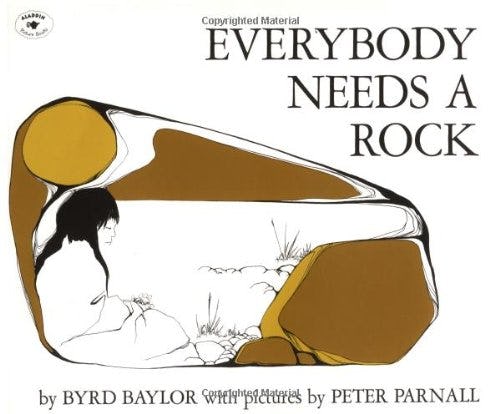
Byrd Baylor, the author of Everybody Needs A Rock, lived in an adobe house with no electricity in the desert of Southern Arizona until she died, in 2021. So when she writes everybody needs a rock, she lived it too. This slender minimalist book — part poetry, part prose — lays out 10 rules for finding a rock of one’s own. Example: “Rule Number 2: When you are looking at rocks, don’t let mother or fathers, sisters or brothers or even best friends talk to you. You should choose a rock when everything is quiet.” With abstracted illustrations by Peter Parnall that complement Baylor’s Southwestern laconicism, the book imparts an all-too-rare sense of space: space for oneself, space in the world, space in the quiet to find one’s own rock. —JDS
Get Everybody Needs a Rock here.
Everyone’s Awake by Colin Meloy, illustrated by Shawn Harris (2020)
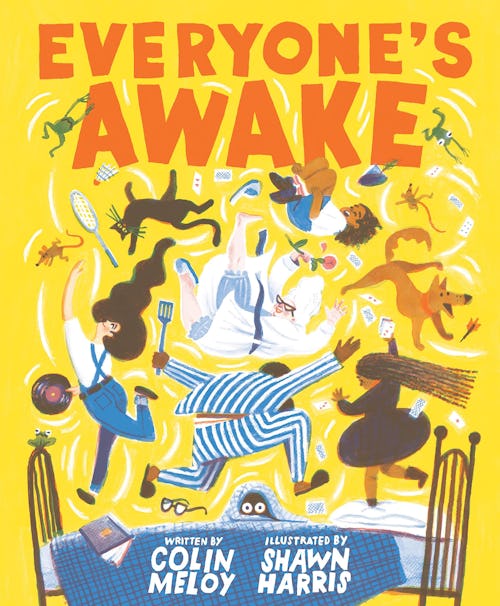
It’s almost annoying how effortlessly Colin Meloy can stroll into picture book excellence, but here we are. After all, Meloy does it all: Tale-spinning Decemberists’ songwriter and frontman, young adult fantasy author (of the excellent Wildwood trilogy), neurodiversity advocate, and collaborative board game creator (Ilimat, designed by his wife Carson Ellis). Everyone’s Awake unfolds in an insomniac hobbyist’s dream world, one that would get the approval of Lemony Snicket for its absurd Gothic architecture and plot. The book implies a cursed night, full of frog, cat, and rat armies, a grandpa back from the dead, and a clueless sleepless family who is just doing what they do at night. Namely, listening to Sinatra records, shopping for bolts of chintz online, reciting Baudelaire, patching roof tiles, tinkering with motorcycles, viewing Bird Man, and making lists of favorite books. The nocturnal chaos grows to a satisfying sunrise denouement. In the end, you want in on Meloy’s home life — and are all the more appreciative of your own home’s quirky night habits. —Tyghe Trimble
Get Everyone’s Awake here.
Fortunately by Remy Charlip (1993)
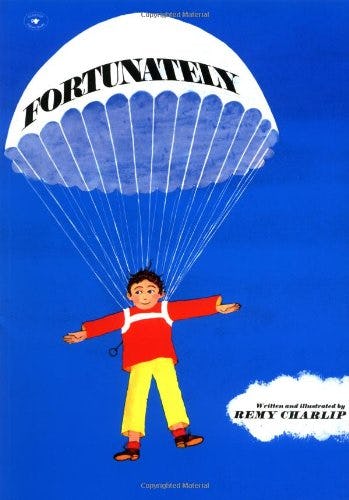
Few children’s book authors have the pedigree of Abraham Remy Charlip — hell, few humans do — or are more thoroughly overlooked. Charlip, a founding member of the Merce Cunningham Dance Company, collaborator with John Cage, Obie-winning director of Bertholt Brecht, was the author of over 40 children’s books including 1964’s Fortunately. On one hand, the book is a simple tale of a boy named Ned who is on his way from New York to Florida for a party. Many events befall Ned, some good, some bad, on his way South. On a more profound level, it hints at the fluidity of life’s circumstance and the impossibility (and foolishness) of static black-and-white thinking. —JDS
Get Fortunately here.
Frederick by Leo Lionni (1967)
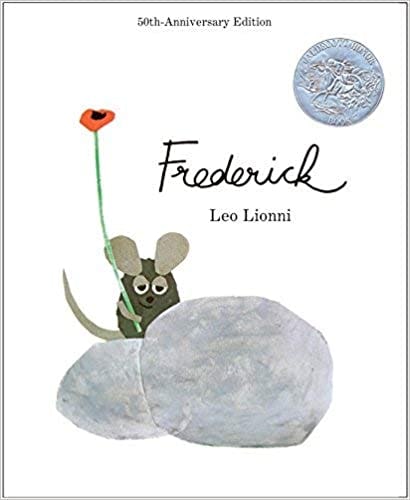
In Lionni’s 1967 classic, a family of mice are preparing their home, inside an old stone wall, for the long winter ahead. While four of the mice hustle to gather all they’ll need — straw for warmth, nuts and corn to eat — the fifth, Frederick, sits idly nearby, gazing dreamily into the meadow. What exactly is he doing, the other mice would like to know? Pressed to account for himself, Frederick answers simply that he’s gathering sun rays, colors, and words for the cold, dark days ahead. Roll your eyes, if you must! But, sure enough, deep into the winter, when the mice have nothing left to say to one another and the “corn is just a memory,” it’s Frederick’s turn to give them what they require for their survival. He conjures the warmth of the sun, fills their minds with color, and puts their suffering perspective, using nothing more than poetry. Is the artist a useless daydreamer, or essential to our survival? Lionni offers a gentle but definitive answer for kids: immaterial contributions (which is all kids have to offer) can have as much value as material ones. —Julia Holmes
Get Frederick here.
Goodnight, Gorilla by Peggy Rathman (1996)
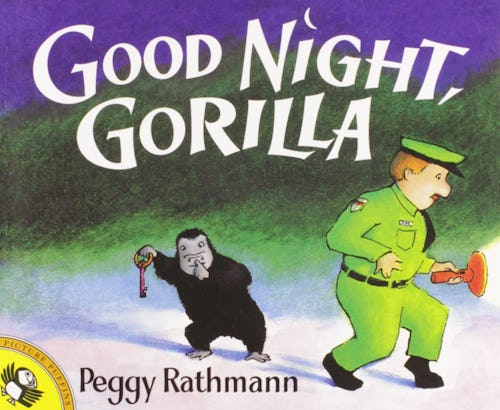
The story is told mostly in pictures, so even very young children are fully in on the joke as a mischievous gorilla steals a portly night watchman’s keys and gleefully frees his fellow creatures from their cages during the watchman’s final rounds at the zoo. The watchman is oblivious to the growing line of animals — elephant, giraffe, lion — tiptoeing behind him through the gates of the zoo, all the way home, and into the watchman’s bedroom unnoticed. Until his wife wakes up, that is, to find the animals (no surprise) curled up and snoozing around them. She calmly but decisively leads them all back to the zoo in the middle of the night, a routine that’s eminently familiar to parents and kids alike. —NA
Get Goodnight, Gorilla here.
Goodnight Moon by Margaret Wise Brown, illustrated by Clement Hurd (1947)
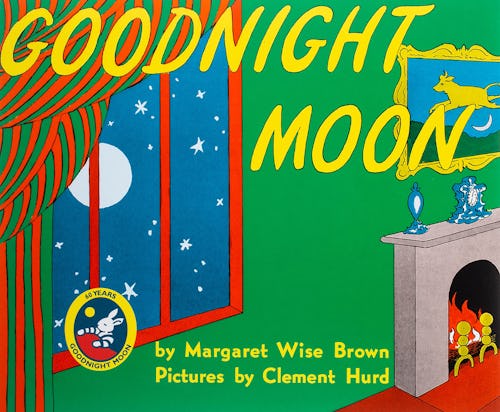
Anyone who’s spent time around very young children knows that they have little regard for the hierarchy of objects that adults hold so dear. Try to direct their attention toward a beautiful sunset, and they’ll just as likely stare at a discarded bandaid in the grass. They’re building their own hierarchy of objects: the things that will matter to them in life more than others. There may be no children’s picture book that reflects this serious childhood work more ingeniously or more honestly than Margaret Wise Brown’s Goodnight Moon. Radical when it was published — it was effectively banned by the all-powerful New York Public Library because it “lacked moral value” — it’s as close to a universal bedtime story as we have in the United States. Nothing really happens here; there’s no right, no wrong, no requirement, even, to stay in bed or go to sleep — just an incredibly soothing inventory of a quiet room. —JH
Get Goodnight Moon here.
The House on East 88th Street by Bernard Waber (1962)
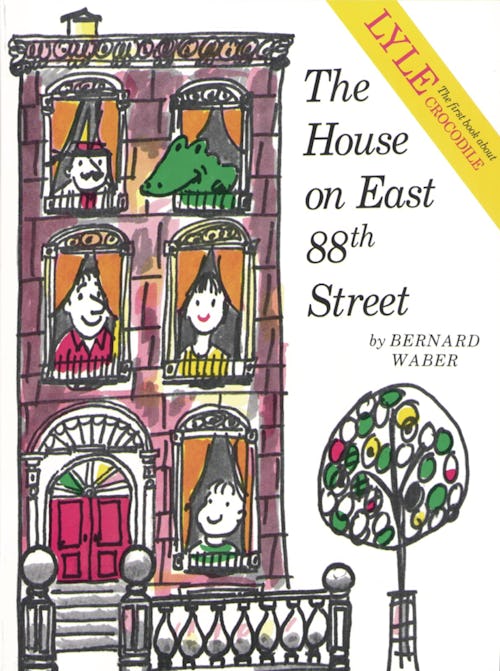
When the Primms move into their new house on East 88th Street, they’re startled to find a charming and talented crocodile named Lyle in the bathtub. Lyle is basically a dream child — he won’t let anyone else take out the old newspapers or bring in the milk, and nothing delights him more than delighting the Primms. All’s well until the villainous Signor Valenti shows up and exploits Lyle’s eagerness to perform and please by hauling him on an unhappy tour around the world for his own profit. Lyle is ultimately reunited with the Primms, who don’t care that he’s a perfect crocodile — they simply love and accept him. Waber was a commercial illustrator in the 1960s, and part of the pleasures of his world derive from its divinely rococo style: the Primms’ well-appointed rooms feature an ornate piano and a potted pistachio tree, chintzy couches and filigreed banisters, Persian rugs and gilt-framed mirrors. Even Lyle has a taste for Turkish caviar. It’s a tantalizing, just-gone world in which people shout into the telephone for an operator and milk is still left on the stoop in the morning. —NA
Get The House on East 88th Street here.
Jason Chin’s Top 5 Children’s Picture Books

With beautifully precise and evocative illustrations, Jason Chin has tackled everything from Redwoods to Gravity to Your Place in the Universe. He received a Caldecott Honor for his 2017 book Grand Canyon, an ingeniously layered natural and geological history of the Grand Canyon. In 2022, he became a Caldecott Medalist for Watercress, by Andrea Wang — which is featured on this list of the greatest children’s picture books of all time.
‘The Fortune-Tellers’ by Lloyd Alexander, illustrated by Trina Schart Hyman (1992)
Trina Schart Hyman was the most influential artist in my life and I could have listed any of her books here. I chose The Fortune-Tellers because the art in it made a particularly strong impact on me as a child. Trina’s illustrations are always full of life and the work in this book contains a particular vitality. The strikingly honest emotions in her characters drew me into this book when I was young, and they have never really let me go.
‘Castle’ by David Macaulay (1982)
I pored over this book when I was young. Macaulay’s pen and ink line is both accurate and spontaneous and and it invited me into the book. Once inside Macaulay taught me all about the inner workings of castles, their design and purpose, but most importantly he told me the story of the castle. The story is what made it all stick and makes this one of my favorite books to this day.
‘The Terrible Nung Gwama’ by Ed Young (1978)
I grew up in a town with very few other Chinese Americans. At that time Ed Young was one of the few Chinese American artists making picture books. His books became the lens through which I understood China, and my own identity. I have chosen this book, because when I was around 6 I asked my dad to read it to me at bedtime over and over again. My dad happily obliged, voicing the monster with a terrifying roar and scaring the pants off me. But this book isn’t just a scary story, it’s also the story of an unlikely hero, a young girl in China who, defeats the monster with courage and cunning — just the kind of person I wanted to be.
‘Brave Irene’ by William Steig (1986)
William Steig is a genius of a storyteller and Brave Irene is one of my favorite books of his. It’s the story of a girl trying to deliver a package in inclement weather. Although the premise is simple, Steig’s language and art make it one of the most dramatic picture books that I know of. In the end, Irene is saved by her courage, wit and most of all her refusal to give up.
‘The Ox Cart Man’ by Donald Hall, illustrated by Barbara Cooney (1983)
This is another book that I repeatedly asked to be read when I was young. It is the story of a farmer and his family living in colonial New England and the wonderfully plain text is perfectly complemented by Barbara Cooney’s beautiful illustrations. The story has a wonderful sense of balance and rhythm: the seasons cycle, the farmer leaves and returns home, and moments of loss are matched by moments of hope. It is reassuring in the best possible way.
How to Heal a Broken Wing by Bob Graham (2017)
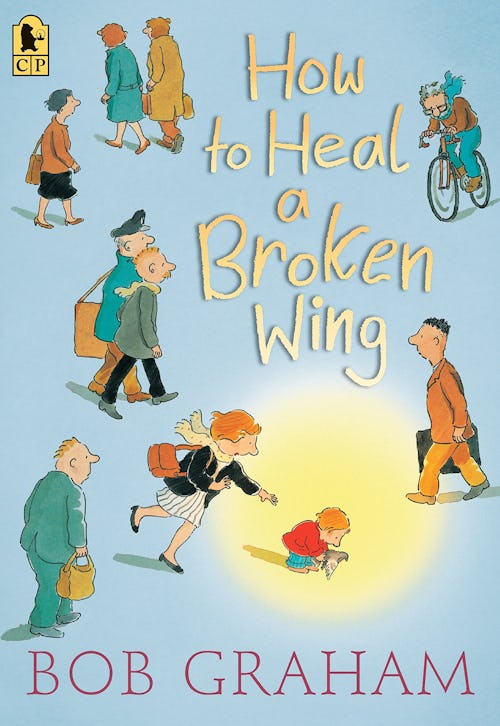
Talking to your kids about loving and respecting nature is one thing. Teaching them how we actually help animals is another thing. Although you’d think older so-called classics would help kids learn about how hurt animals can be helped, the truth is, no one kids book does it better than this 2017 masterpiece from Bob Graham. If you’ve got a kid who worries about hurt animals, or a kid who needs to worry about hurt animals a little more, this book is essential. —RB
Get How to Heal a Broken Wing here.
In the Night Kitchen by Maurice Sendak (1970)
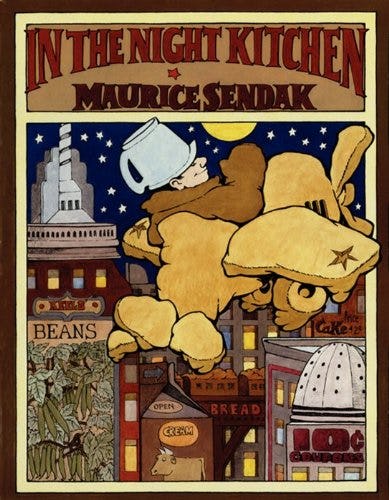
In this 1970 follow-up to Where the Wild Things Are, the dreamer is named Mickey, not Max. The exiler isn’t a parent but sleep itself and instead of Wild Things are a trio of mustached bakers who bake Mickey in an oven as part of a “morning cake.” And yet... yet... there’s so much joy and magic in these pages. Mickey in a suit of warm gingerbread. Mickey in a jar of cold milk. Mickey, e’er grinning, popping up from his cake tin. Controversial since its publication — moralists objected to Mickey’s nudity — In the Night Kitchen continues to invite the reader into its strange slightly ominous yet nevertheless pleasurable reverie. —JDS
Get In the Night Kitchen here.
Islandborn by Junot Díaz, illustrated by Leo Espinosa (2018)
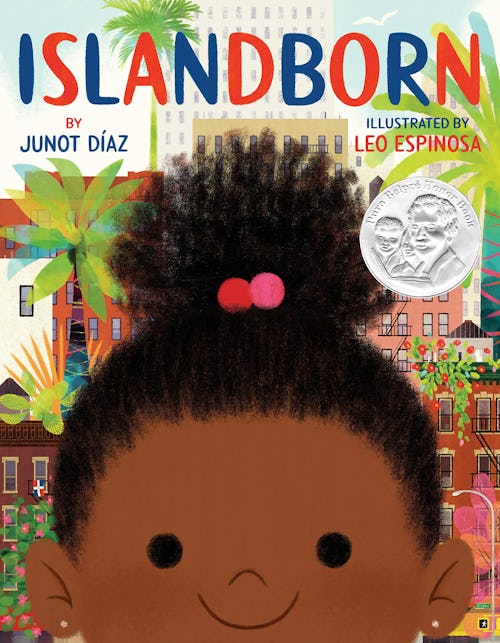
Not many picture books turn a kid’s curiosity about the world inward, to questions about the self. When her teacher gives her class an assignment — draw a picture of their first home — Lola is stuck. She left the island when she was a baby and doesn’t remember it so she decides to talk to family and people in her NYC neighborhood who do remember. In talking to others she builds a picture of the vibrant place her family is from, where bats are big as blankets and you can drink straight out of coconuts and there’s more music than air. She also learns about a monster who ruled over the island for many years, making some families disappear and others flee. (The monster isn’t named, but one might infer that it’s Rafael Leónidas Trujillo, of Pulitzer Prize-winning novelist Junot Diaz’s native Dominican Republic.) The adults are judicious with what they tell Lola, but this is her first time peering into these ugly shadows. Lola’s hunger to know more about who she is and how she fits into the world comes from a place deep within her — it’s a need shared by so many children but seldom represented in picture books. —NA
Get Islandborn here.
I Want My Hat Back by Jon Klassen (2011)

You know a kids book is special when it has a twist ending in which one character kills another character over a missing hat. With deadpan wit and macabre implications, Jon Klassen’s I Want My Hat Back isn’t going to be every child’s cup of orange juice. In fact, many adults might be angry that the book basically ends with a moment where your child asks, “Wait, what happened to the rabbit?” In fairness, we don’t actually see the bear eat the rabbit, but he did get his hat back somehow, right? If you have a child who has a proclivity toward dark humor, and/or is destined to become a future fan of Monty Python, then you can do no better than this very unique and off-beat missing-hat thriller. — RB
Get I Want My Hat Back here.
Knuffle Bunny: A Cautionary Tale by Mo Willems (2004)
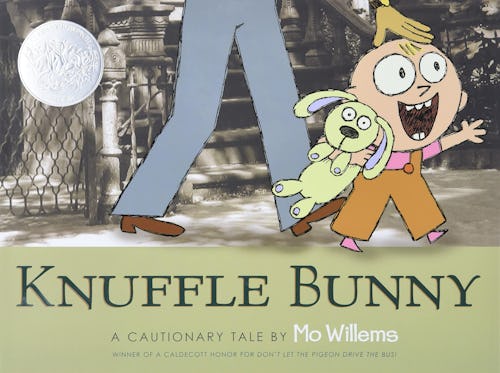
Knuffle Bunny: A Cautionary Tale, Mo Willems’ early aughts Caldecott-winning book, is so close to being grating it is a testament to Willems’ authorial skill that it skates its way to genius. It concerns a preverbal girl (Trixie) and her father (Daddy) running an errand (laundry.) Trixie leaves Knuffle Bunny at the laundromat, a fact she realizes on the way home and which she attempts to communicate to her father in her own way. “Blaggle flabble!” she says, “Wumby flappy?” she insists. Predictably her Dad smugly replies, “That’s right, we’re going home.” Anyway, they get home and Mom immediately ascertains the bunny is missing. The family takes off back through Prospect Park to the laundromat where the father “heroically” recovers the stuffed animal. “Knuffle bunny” she exclaims, uttering her first intelligible words.
Billed explicitly as a cautionary tale, one is left puzzling over the moral. Is it that fathers are so blinded by patriarchal hubris they don’t listen to their daughters and rarely to women? Is it that that mothers are more intuitive than fathers? Perhaps it’s that it is worth it to buy a washer and dryer or move out of New York City altogether? (Willems, though he worked for years in Brooklyn, now lives in Massachusetts.) Or maybe it’s that necessity is the engine of verbal development? Willems’ wisely allows us the reader to extract from this deceptively simple text the caution — and pleasure — we wish. —JDS
Get Knuffle Bunny: A Cautionary Tale here.
Lenny the Lobster Can’t Stay for Dinner by Michael Buckley and Finn Buckley, illustrated by Catherine Meurisse (2019)
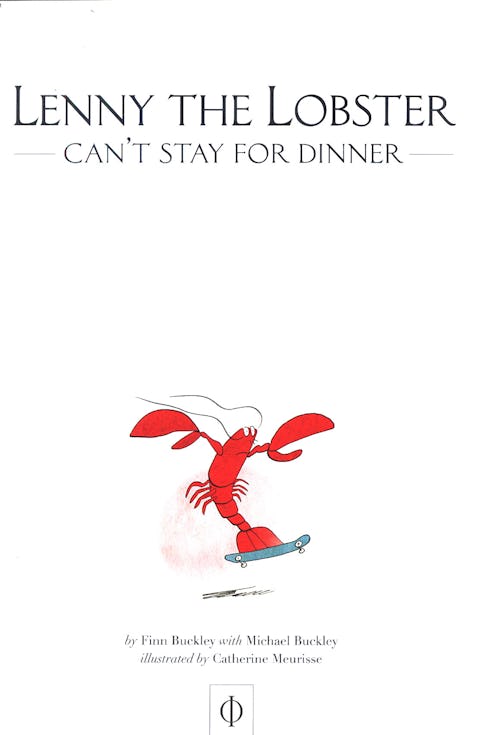
Well-known children’s author Michael Buckley co-wrote this strange macabre and hilarious 2019 book with his then-10-year-old son Finn. It concerns a lobster, Lenny, who just wants to party. Lenny is excited that the other guests at the dinner party at which he finds himself wear bibs with his very own image on them. You see where this is going. A clever bit of reader guidance allows for a choose-your-own-adventure although both endings are a bit dystopian (for Lenny, and perhaps, us all.) Meurisse, a survivor of the Charlie Hebdo massacre, adds precisely the right amount of humor and pathos into the vibrant illustrations. —JDS
Get Lenny the Lobster Can’t Stay for Dinner here.
The Lost Words by Robert MacFarlane, illustrated by Jackie Morris (2017)
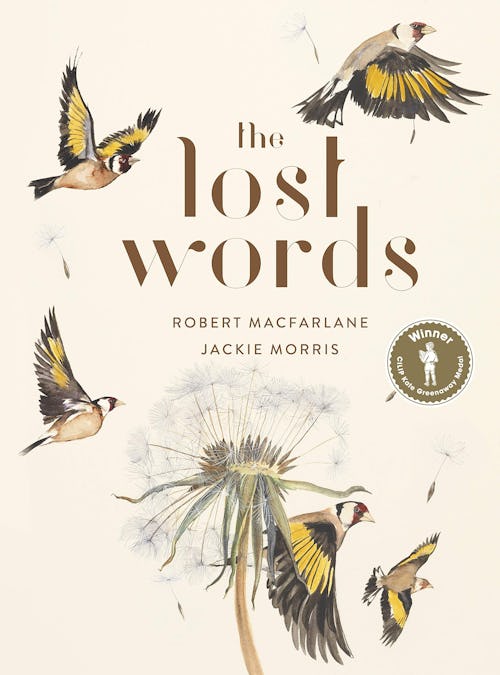
Technically a book of illustrated poems, Lost Words is a picture book dedicated to saving language once common to childhood — the English words for the diverse flora and fauna that used to be abundant just outside the home. While most children’s books serve up the standard array of big-name animals — your horses, dogs, bears, etc. — Lost Words conjures everything from “burnished conkers” to the querulous magpie who will “pick a fight in an empty room.” Part of an ambitious collaboration between British nature writer and illustrator Jackie Morris to save “wild” words in danger of extinction, this “spellbook” is simply a joy to read aloud with kids. —NA
Get The Lost Words here.
Madeline by Ludwig Bemelmans (1939)
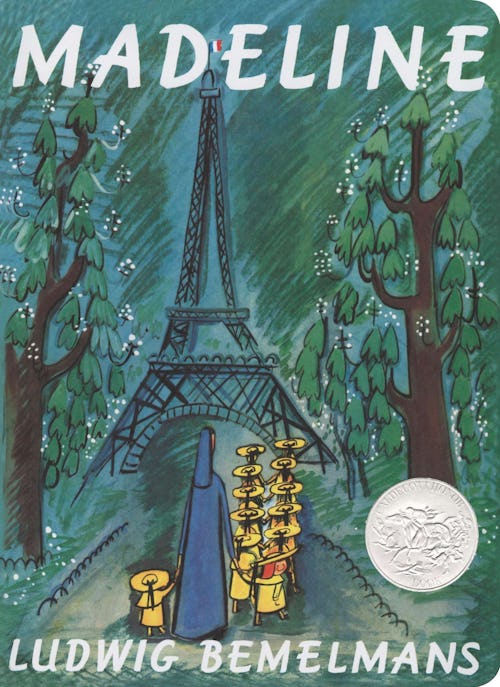
In 1939 Austrian-American Ludwig Bemelmans published Madeline, the first of his series about a plucky boarding school heroine in Paris that has gone on to be read by millions of children. A sort of glamorous girlhood drama — often invented — suffuses Madeline’s world: a run-in with a handbag thief, a tiger in the zoo, an accidental plunge into the Seine, a bout of appendicitis that results in an exciting ambulance ride through rain-soaked streets. Madeline is fearless, independent, and calmly competent — persuasively free without seeming lost, even if the only evidence of her parents is a dollhouse from her father that appears as she recuperates from surgery. Bemelmans’ moody illustrations of Paris — gloomy aquatic greens through which the schoolgirls walk in two perfect lines — hint at shadows on the eve of World War II. —NA
Get Madeline here.
The Monster at the End of This Book by John Stone, illustrated by Michael Smollin (1971)
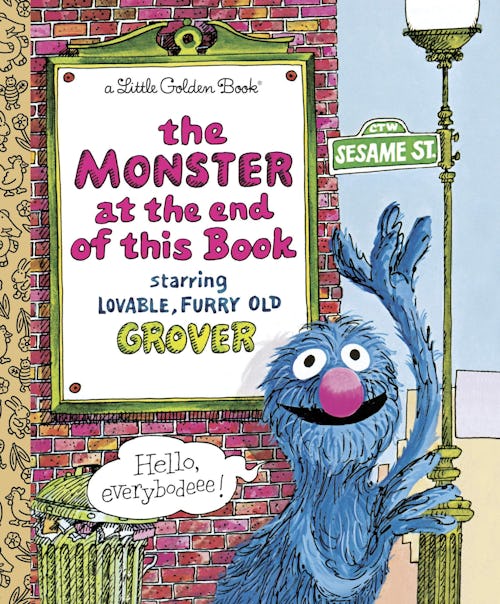
Generally speaking, licensed children’s books rarely rise to the level of greatness. This 1971 book, featuring Sesame Street’s Grover, is the exception. Why? First of all, it was written by Jon Stone, who helped to create Sesame Street so it flows with the same vivacity as the original. Secondly, it is an early — perhaps the earliest — example of a self-referential children’s book. (More, like A Perfectly Messed Up Story and Press Here followed.) The set-up is simple: Grover fears there is a monster at the end of the book and constructs various barriers to prevent the reader from turning the page. The payoff isn’t just the end. (Spoiler: Grover is the monster.) But Grover’s panicked pleas to desist that by virtue of the brilliant structure of the book must be disregarded. —JDS
Get The Monster at the End of This Book here.
Moon Man by Tomi Ungerer (1966)
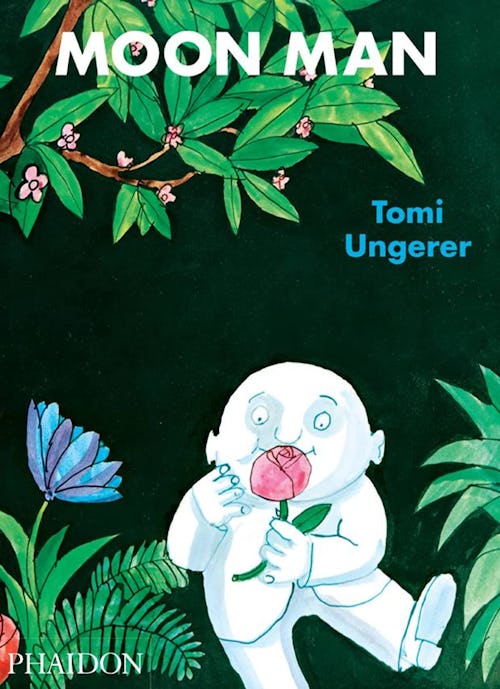
It’s a dangerous game to interweave an author’s life with those of his characters and yet one can’t separate the outlaw outsider Tomi Ungerer from his most famous creation, the melancholic hell-raiser Moon Man. Ungerer, who grew up in Alsace-Lorraine as it was tossed and turned between the Germans and the French in the early 20th century, envisions the Moon Man as a well-intentioned visitor to the Earth yet one who seldom found Earthlings to be a hospitable species. The Moon Man is chased and harassed before finally finding a “long-forgotten scientist Dokter Bunsen van der Dunkel,” who agrees to send him back to the Moon. Ungerer, who was effectively exiled from the United States after clashing with the all powerful American Library Association, draws the Moon Man with such empathy and delicacy, the book’s resonance lasts long after the final page is turned. —JDS
Get Moon Man here.
Olivia by Ian Falconer (2000)
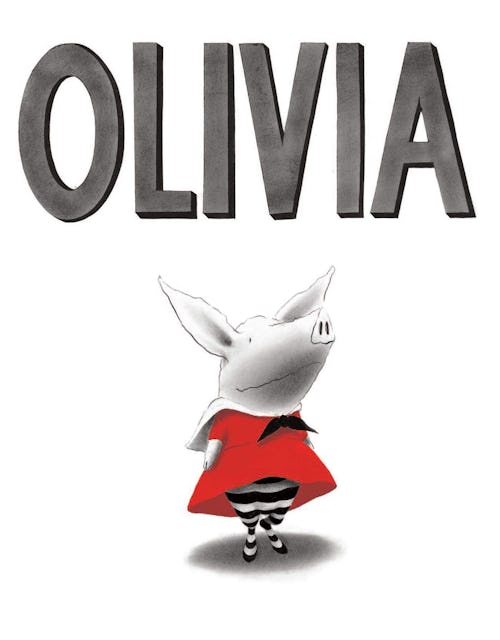
Like her predecessor, Eloise, Olivia is an energetic, strong-willed child — or, in her case a strong-willed pig — prone to exhausting the adults around her. “She is very good at wearing people out. She even wears herself out.” And how could she not, with an imagination like hers? A sandcastle becomes the Empire State building. On a museum visit, unimpressed by Jackson Pollack's paintings but enthralled by Degas, she imagines herself on a shadowy stage in a tutu. Ian Falconer’s black-and-white illustrations are animated by commanding flashes of red. We’ve all known bright, bossy whirlwinds, but it’s the specificity and seriousness of Olivia’s fantasies that make her vividly memorable and useful to children with their own big imaginations. —NA
Get Olivia here.
A Perfectly Messed Up Story by Patrick McDonnell (2014)
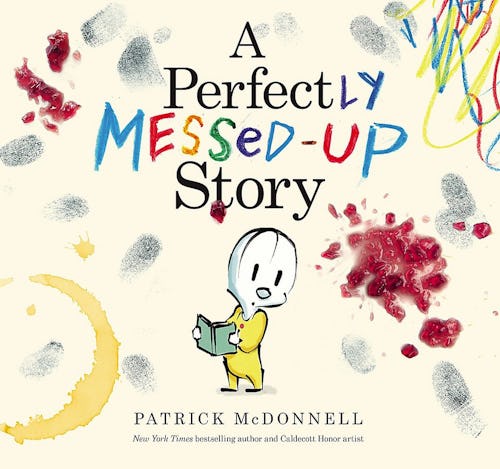
A descendent of Jon Stone’s The Monster at the End of This Book, A Perfectly Messed Up Story is aware of its own book-ness. “Once upon a time, little Louie went skipping merrily along,” it begins as we see charming Louie in an idyllic meadow. Alas Louie — and his story — is besmirched by a blob of a non-diegetic grape jelly, then peanut butter, then fingerprints. Each interruption perturbs Louie who feels, perhaps rightly, that his story is getting messed up. Written and illustrated by Patrick McDonnell — of Mutts, the best comic strip since Calvin & Hobbes — A Perfectly Messed Up Story is smart but not oblique, sweet but not cloying and, contrary to its own protagonist’s views, perfect just as it is. —JDS
Get A Perfectly Messed Up Story here.
Ron Barrett’s Top 5 Children’s Picture Books

Artist Ron Barrett’s children’s books, created with author Judi Barrett, have reached and delighted millions of young readers all over the world. Over a long and distinguished career, Barrett’s work (Animals Should Definitely Not Wear Clothing, Pickles to Pittsburgh, An Excessive Alphabet) has been recognized by everyone from the Society of Illustrators to the Louvre. His already-classic Cloudy With a Chance of Meatballs is featured on this list the greatest picture books ever.
‘Millions of Cats’ by Wanda Gág (1928)
Gotta love a woman who draws on sandpaper. Gotta love her marriage of hand-lettered text, illustration and page design. I don’t gotta love the cannibalism in the book.
‘Mr Mixie Dough’ by Vernon Grant (1934)
A bold and postery large format hand-lettered tale of an elfin baker. If you know Snap, Crackle and Pop, you know Vernon Grant.
‘Baby’s Own Aesop’ by Walter Crane (1887)
My interest in everything Pre-Raphaelite led me to this masterful designer and illustrator. He borrowed from the Elgin Marbles. I borrowed his page designs for my Meatballs book.
‘Marigold Garden’ by Kate Greenaway (1901)
Another lovely Pre-Raphaelite inspired book. Like Crane, she was coached in naturalistic drawing by John Ruskin. Never did get the shadows right though.
‘Danny and the Dinosaur’ by Syd Hoff (1958)
More Post-Bronx than Pre-Raphaelite. I love Syd’s easy, relaxed style and polka dot dresses. I commissioned Syd to draw one of his archetypal undershirted males for a deodorant ad I art directed. Copied his style in my Cats Got Talent.
The Philharmonic Gets Dressed by Karla Kuskin, illustrated by Marc Simont (1983)
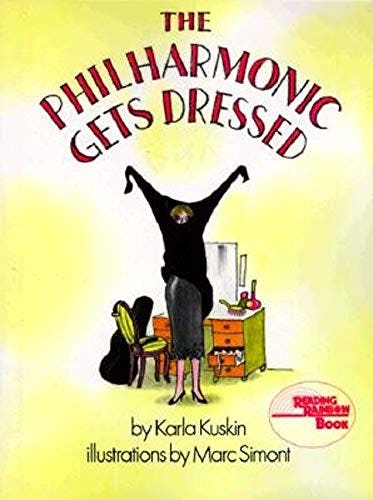
That a generation of readers knew that there were 105 musicians in the New York Philharmonic and their precise toilettes is thanks to 1983’s The Philharmonic Gets Dressed. The wholly unexpected book — it’s nominally about music that ends just before the first note is struck — is the work of Karla Kuskin, a wonderfully witty children’s book author. Without speaking above the reader or below, Kuskin describes in detail how the musicians bathe, shave, get dressed and commute to the Philharmonic hall. Writing in 1983, Kuskin notes, “There are ninety-two men and thirteen women.” Today, thankfully — after blind auditions were instituted — it’s more evenly divided between men and women. But the exhilaration and anticipation of Kuskin’s text rings clearly through the years. —JDS
Get The Philharmonic Gets Dressed here.
Press Here by Herve Tullet (2011)
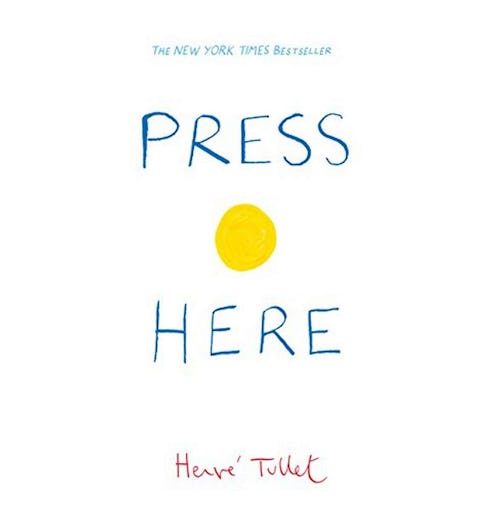
When Herve Tullet’s Press Here came out in 2011 — it was published in French the year prior as Un Livre — children were just on the cusp of living in a touchscreen world. The iPhone was out. Tablets existed. But still, the preverbal impulse to swipe had not yet taken hold. But it’s a testament to the design ingenuity of this near wordless text, that Tullet’s book of colored dots and short directives — press here, turn here, tap this — continues to enchant. One of the best examples of an “interactive” book ever published, Press Here is all a children’s book should be: empowering, entertaining, and enlightening. —JDS
Get Press Here here.
Rotten Island by William Steig (1969)
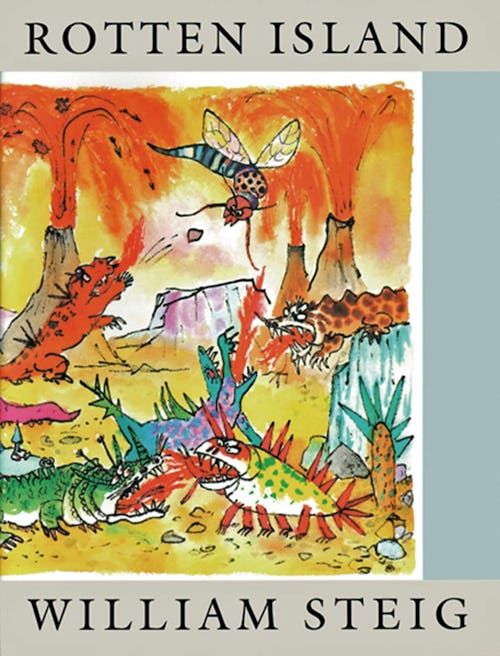
Willam Steig, the New Yorker cartoonist who, after turning to kids books in his sixties created Shrek!, is one of the more subversive picture book creators on this list. You don’t read so much as feel Steig, with his crude, crooked lines; dark humor; anti-authoritarian leanings (inherited honestly, as the son born to Polish-Jewish socialist immigrants in 1908); and surprising optimism. No message is more biting, brilliant, and, by the end, hopeful than the one found in his anti-war classic Rotten Island (originally Bad Island, when released in 1969). A world of vain, jealous, violent creatures who “could spend hours adoring their own ugliness” find a flower growing in the gravelly hellscape they call home and lose their collective minds. The book doesn’t just capture the revolutionary spirit of 1969 but shows how divisive hatred everywhere can tear perfectly content people — or monsters — apart. In the end, Steig seems to assure us that hatred will self-immolate and peace will always win out. It’s a timeless lesson — some flowers we could all use a whiff of in our divided times. —TT
Get Rotten Island here.
Runaway Bunny by Margaret Wise Brown, illustrated by Clement Hurd (1942)
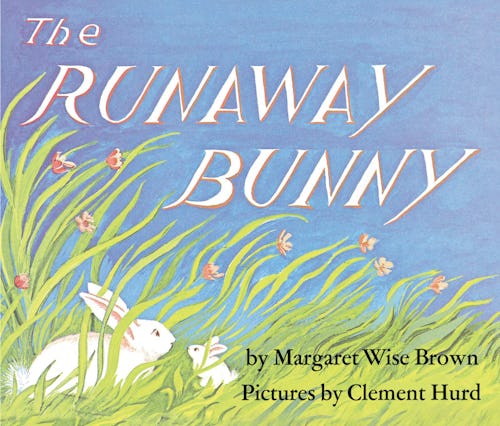
Essentially a prequel (it was published five years earlier, in 1942) to Brown’s Goodnight Moon, Runaway Bunny is a similarly simple story that, in this case, affirms a parent’s willingness to do anything to keep a child safe (and, yes, close). Its tone is relentless, determined, even a touch fanatical. When a little bunny tells his mother that he’s going to run away from her, no reason given, she doesn’t explain why little bunnies should stay home or talk about her own feelings. If he runs away, she’ll simply come after him — no matter what. What if he turns into a fish and swims away? What if he becomes a rock high up in the mountains or a crocus in a hidden garden or a little sailboat that sails away from her? Then she’ll become a fisherman, a mountain climber, a gardener, a wind that blows the boat wherever she wants it to go. Having explored every imaginable separation, the little bunny concedes that he might well stay at home with his mother and be himself. —JH
Get Runaway Bunny here.
A Sick Day for Amos McGee by Phillip C. Stead, illustrated by Erin E. Stead (2010)
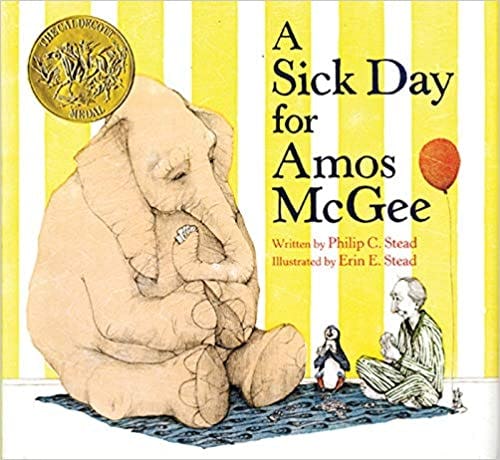
When kindly zookeeper Amos McGee fails to turn up for work, a concerned menagerie boards a bus and travels to their friend’s home to find him in bed with a bad cold. They immediately begin to care for him with the same kindness and thoughtfulness he has always shown them. The simple story affirms how friendship — and family-like connections beyond family — keep us safe, happy, and cared for, even when the usual caregivers aren’t available, and even in the most extreme and surprising circumstances. In a world too often hurried and harried, loud and sped-up and overscheduled, Amos and the animals are slow and patient. No one is rushing. Children have time to absorb the details on each page: Amos’s ruddy congested nose, rumpled striped pajamas, and his modest, rickety home, all conveyed with the grace and lightness that’s iconic of the Steads. —NA
Get A Sick Day for Amos McGee here.
Snow by Uri Shulevitz (1998)
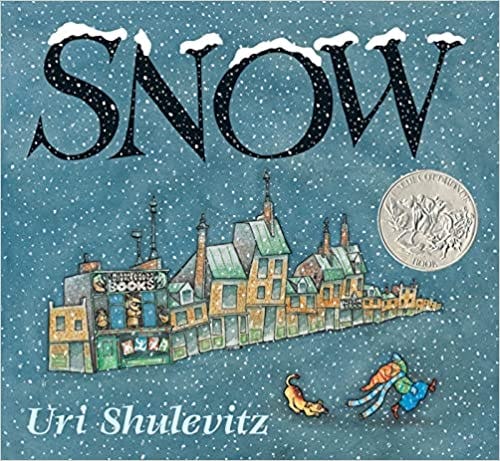
A single snowflake drifts down from the gloomy leaden sky over Uri Shulevitz’s bustling European city. A boy and his dog gaze up hopefully, even as all the adults briskly insist that no snow is called for. But adult authority — so onerous to children —means little to snow, and it falls anyway, breaking the busy rhythm of the city, and muffling the strident grownup voices from the television and radio. As the snow deepens, so does its power over adult certainty… the world of the city falls away, and the boy, his dog, and a series of storybook companions take dream-like flight. The boy and the snow share something the adults have lost — an essential freedom of mind and spirit that can literally lift us above the ordinary world. It’s a triumphant, joyful wonder of a book, and a genuinely respectful celebration of a child’s vision. —NA
Get Snow here.
Sofia Valdez, Future Prez by Andrea Beaty, illustrated by David Roberts (2019)
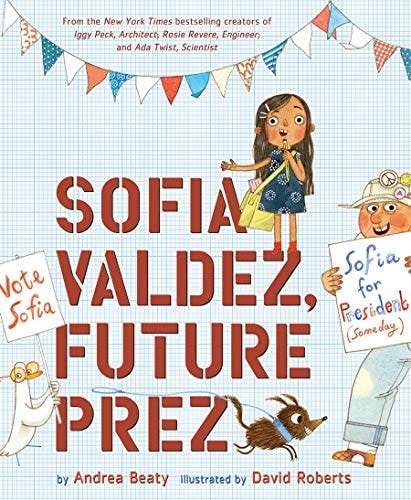
When a young girl’s abuelo trips and falls on a mountain of garbage, she decides to avenge him. Well, actually, Sofia Valdez isn’t really the story of the wrath of Sofia, but instead, a young girl becoming an activist after her grandpa does slip and hurt his leg on a mountain of trash. Like many other books in Andrea Beaty’s The Questioneers series, what makes this story work is its perfect combination of a great message and a story that is actually fun. Like Rosie Reverie or Ada Twist, the David Roberts illustrations help to convey fun first, and the lesson second. In a world in which countless kids books are trying to teach kids something important about society, this one stands apart because it remembers to still be a kids book. Spoiler alert: Sofia does not become president at the end of this book. And, that may actually be the most brilliant thing about it. Not all stories end. Most of them keep going after we turn the last page. —RB
Get Sofia Valdez, Future Prez here.
Sophie’s Squash by Pat Zietlow Miller and Anne Wilsdorf (2013)
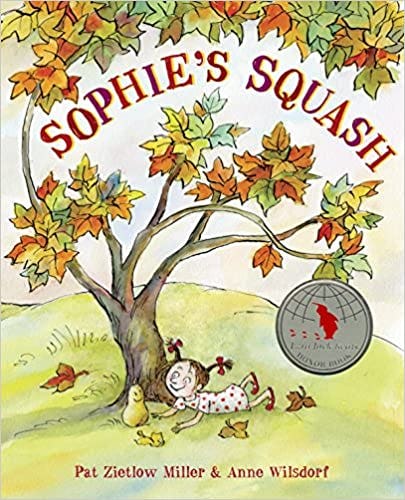
Endearing oddball Sophie comes home from the farmer’s market with a butternut squash, but instead of letting her mother cook it for dinner, Sophie turns the squash into a friend, painting a face on it and naming it Bernice. She dotes on Bernice, even taking her to story time at the library despite her parents’ attempts to nudge her toward less peculiar playthings. So far, so whimsical. But the vegetable eventually begins to rot — a reality Sophie resists until she’s left with no choice but to bury it in the garden. As she looks out the window at snow blanketing the place where the squash lies buried in the cold, we realize too late we’ve been misled by Sophie’s round cartoon face, spiky pigtails, and comic eccentricity, and have stumbled into one of the most unexpectedly poignant scenes of first loss in children’s picture books. Her parents are unable to divert or console her; it’s only time that works its reliable magic. —NA
Get Sophie’s Squash here.
A Stone Sat Still by Brendan Wenzel (2019)
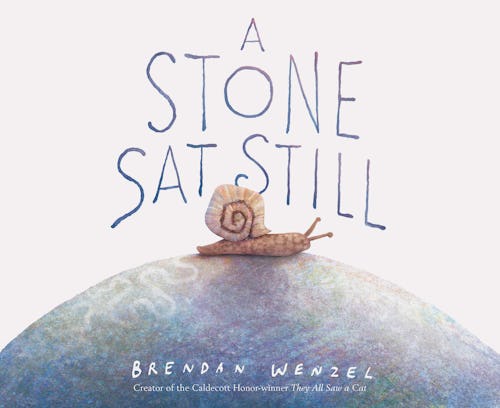
Can a children's picture book capture the enormity of geologic timescales and smallness but sacred importance of all living things? Brendan Wenzel’s A Stone Sat Still does just that, offering a medium-sized rock as both backdrop and main character to a host of wild animals who see it from various points of view. For a snail “the stone was rough”; for a porcupine, “the stone was smooth”; a moose finds “the stone was a pebble”; and a family of mice know the stone as “a home.” The world changes around the stone, with animals coming and going, surviving and thriving. Eventually the ages catch up and the stone becomes an island, and then a wave, swallowed by the rising waters. But this ominous end for our main character is also a beginning for some introspection. “Have you ever known such a place?” poses Weznel, “Where with water, grass, and dirt, a stone sits still in the world?” If that doesn’t prompt you to ponder your role on this fragile marble, what will? —TT
Get A Stone Sat Still here.
The Story of Ferdinand by Munro Leaf, illustrated by Robert Lawson (1936)
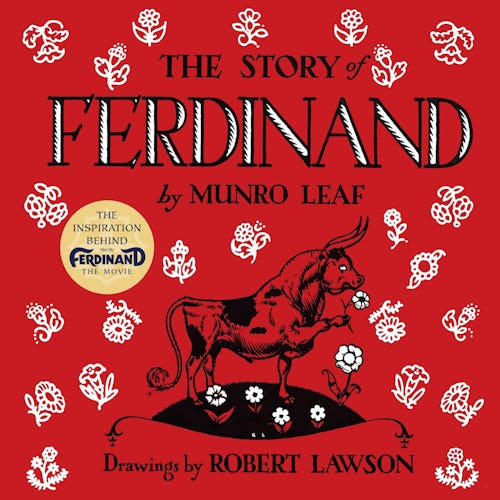
This story about a dreamy, pacifist bull, Ferdinand, was published on the eve of the Spanish Civil War, later banned by both Franco and Hitler, and distributed by the Allies after the liberation of Germany. However colorful its publishing history, its enduring power is the delightful improbability of the solid Ferdinand himself. Despite only wanting to sit peacefully beneath his beloved cork tree, sniffing flowers, the mighty bull is hauled off to fight in the bull rings of Madrid. Once there, no amount of prodding or cajoling can persuade him to fight. He catches a whiff of the blossoms in the women’s hair in the crowd, settles on his ample haunches, and refuses to budge. Children who face endless pressure to fit in will find it a relief to encounter someone who is so thoroughly himself that external pressures don’t compromise him. The rest of the world may stamp and paw and snort, wave their flags and clamor for a fight, but Ferdinand is who he is and likes what he likes. —NA
Get The Story of Ferdinand here.
Swimmy by Leo Lionni (1963)
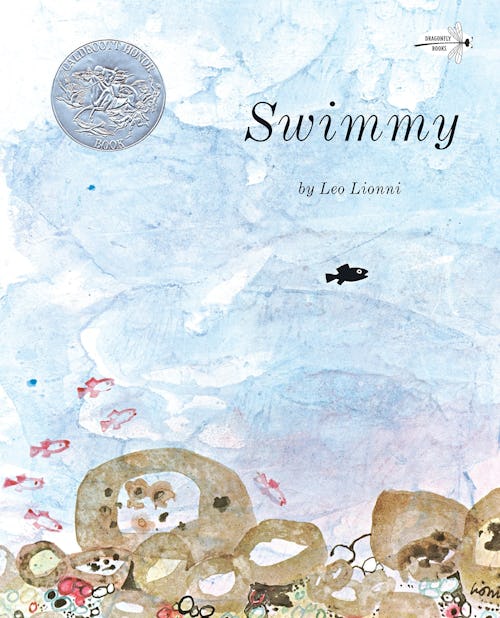
A small black fish, part of a school of red ones, is bullied by a large tuna. This small fish, Swimmy, organizes his friends into the shape of a larger fish, thereby scaring the tuna away. “I will,” says Swimmy, “be your eye.” The setup of Dutch-Italian artist Leo Lionni’s 1963 Caldecott-winning book is simple. And yet, the more one gazes at the bright if spare drawings — Lionni used stamps, paper cutouts and pressing — the more profound the tale of Swimmy becomes. It becomes a story not just about leadership but one about community organizing and striking the balance between hierarchy, power and purpose within an egalitarian framework. Or it’s just a simple tale of a standout fish. Either way works, which is part of Swimmy’s brilliance. —JDS
Get Swimmy here.
Tadpole’s Promise by Jeanne Willis, illustrated by Tony Ross (2005)
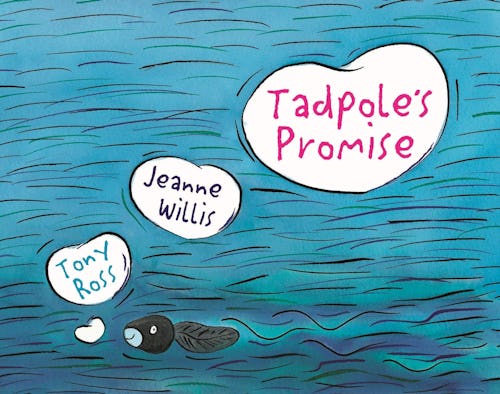
Perhaps only Guy de Maupissant wrote as concisely about irony, love and loss as Jeanne Willis, the British author and illustrator behind 2005’s extraordinary Tadpole’s Promise. A caterpillar and a tadpole fall in love. The caterpillar demands the tadpole never change. He does. He grows arms and legs, as tadpoles do. She storms off, falls asleep and awakens as a butterfly. She returns to the water’s edge to search for her tadpole again only to be eaten by a frog who waits there to this day, wondering where his beloved caterpillar went. Sure, it’s a children’s book but this is the stuff of high literature and of actual life: Change is inevitable. Clinging is suffering. Rarely are the wages of this misapprehension death, as it is here, but the lesson sticks. Told guilelessly with British understatement and cheerful but not trite drawings, this book is impossible to shake. —JDS
Get Tadpole’s Promise here.
Thank You, Omu! by Oge Mora (2018)
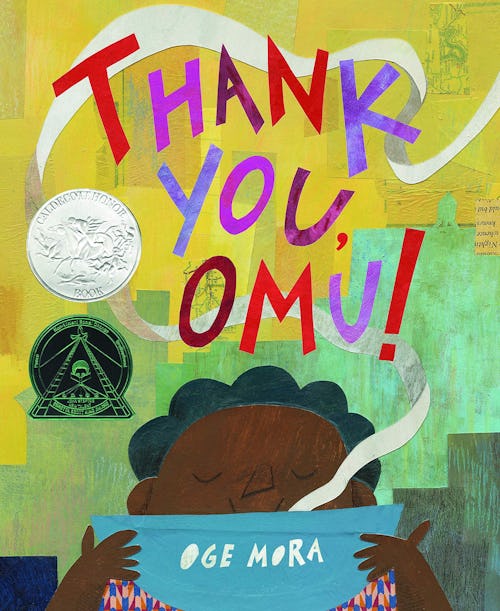
The incredible aroma of Omu’s thick red stew wafts out into the city streets and draws everyone to her door — a little boy, a police officer, a hot dog vendor, a doctor, lawyer, dancer, baker, and many others. Omu happily shares a bowl of her stew with each of them. But when it gets dark and the streetlights go on, Omu has nothing left for her own dinner. She answers a knock at her door and opens it to find all the day’s visitors have returned — she sadly has to tell them she has nothing left to give. But it turns out that they’ve all brought food and gifts for her. Everyone squeezes into Omu’s tiny apartment and does that most familiar and profound of things — shares a meal together. Mora’s collage art is vibrant and kinetic, and Omu is a recognizably warm, ample, generous grandmotherly presence. An affectionate and joyful book that meets a child’s sense of love where it lives — in gratitude that everyone is together. —NA
Get Thank You, Omu! here.
The Three Robbers by Tomi Ungerer (1971)
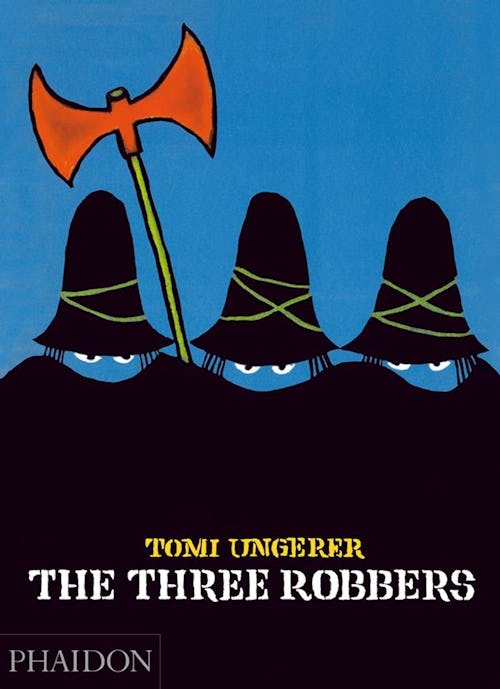
Darkness, in its literal form and literary form, predominate in Tomi Ungerer’s 1971 tale of three robbers. For most of the book, the malevolent trio is seen only in silhouette as they plunder townsfolk. That is, until they meet an orphan named Tiffany. Tiffany loves the robbers and they, in turn, love her. Thus does light begin to touch these pages and the three robbers’ hearts. By the end, they’ve decided to use their mammon to care for the disenfranchised and neglected children of the area and we, the readers, are left in awe both of Ungerer’s formal mastery and the heart that beats purely in the imagination. —JDS
Get The Three Robbers here.
Watercress by Andrea Wang, illustrated by Jason Chin (2021)
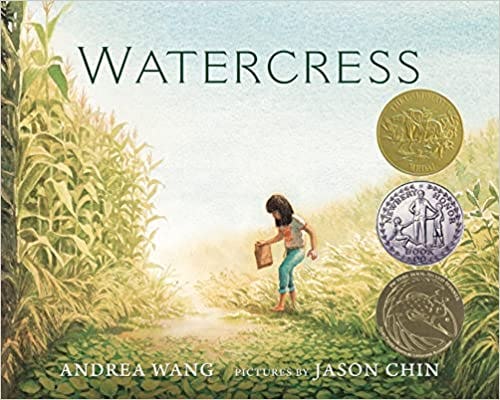
Children in immigrant families know that few things can stir feelings of shame and love as powerfully as food can. While driving in their old Pontiac in Ohio, a girl’s parents stop suddenly when they spot watercress growing in a roadside ditch. The family gets out to forage barefoot for it. The water is cold and mucky and snails cling to the leaves, and the girl ducks her head when a car passes, hoping it’s no one she knows. The watercress has stirred her parents’ longing for China and the past, and that evening as the girl wishes she had grocery store vegetables on her plate instead of watercress, her mother gets out an old photo of the family she rarely talks about. It can be hard to imagine the world before you existed, but as she hears a story about famine and a lost little brother, the girl is aware of a world bigger than her own shame and the sort of burning embarrassment that’s part of growing up. She takes a bite of the watercress — peppery, spicy — and for a moment the gulf is bridged and a new memory is made. Written as “a love letter and an apology” to her parents, Andrea Wang’s deeply beautiful book speaks to children whose families are from worlds far away. —NA
Get Watercress here.
We All Play by Julie Flett (2021)
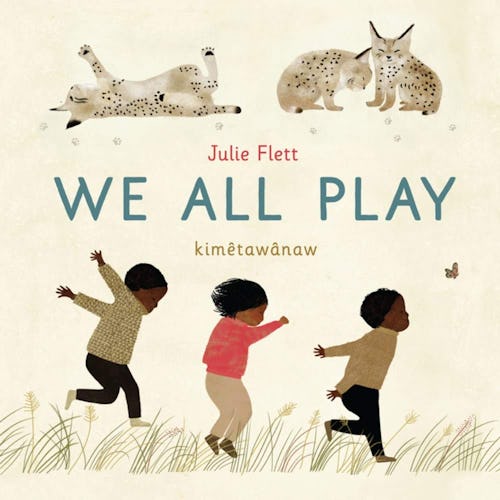
Wild animals are the main characters of many, many (one wants to say “most”) picture books for young children — they are the perennial stars of these worlds of total possibility and almost always standing in for ourselves (animals who ride bicycles and go on cruises). The latest book from Cree Métis author and illustrator Julie Flett comes at this connection differently and from a deeper tradition, showing animals as themselves — seals swimming, buffalo running, snakes sliding through the high grass — and alternating those scenes with children as themselves swimming, running and sliding. That “we all play” is an easy but profound truth, conveyed through beautiful illustrations and in two languages, English and Cree. —JH
Get We All Play here.
What’s Cooking? (2017) & Can I Eat That? (2016) by Joshua David Stein, illustrated by Julia Rothman
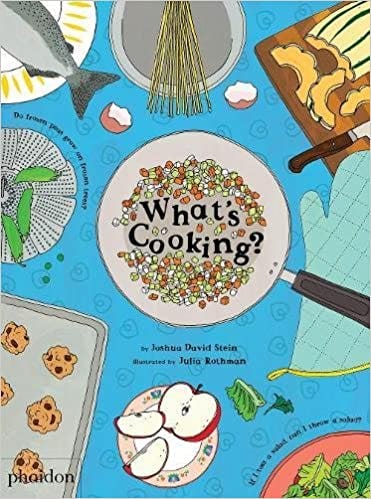
Joshua David Stein knows a thing or two about food. A restaurant critic; a designer of Esquire's Best New Restaurant list; co-author of Kwame Onwuachi’s My America: Recipes From A Young Black Chef; and writer for The Nom Wah Cookbook and Il Buco Stories and Recipes, he’s a name at the center of the foodie world. He’s also an accomplished children’s book author, with nearly a dozen picture books to his name. Stein brings these areas of expertise together in a whimsical, insightful and truly delightful pair of picture books about food: Can I Eat That? (2016) and What’s Cooking? (2017). With playful wordplay and humorous introductions to rarified dishes like clams en gelee, ballotine, uni, and tonnato, these books elicit laughs and conjure real joy, especially when read aloud. You may have never wondered, “If there is bacon, is there bacoff?” or “Is this a very old grape or a very new raisin?” But you do now — and should be hungry for more. —TT
Get What’s Cooking? here.
Get Can I Eat That? here.
Where the Wild Things Are by Maurice Sendak (1964)
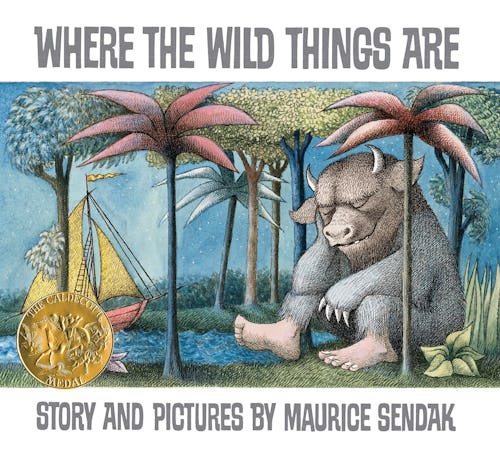
Power, who has it and who doesn’t; love, how it clings and punishes; fear, how it inspires and binds. These themes are at the heart of one of Maurice Sendak’s most moving — and by far his most popular — tales. A spelunker par excellence of a child’s weltanschauung, Sendak pinpoints exactly how Max, after being sent to bed without supper, is hungry not just for food but for agency. Max finds it as the King of the Wild Things but also finds his outer limit of tolerance for chaos and fear. The text and the images never tell. They simply show. Sendak’s slender yet confident lines, his always surprising imagery, his sense of visual and textual rhythm burrow the text into the mind of all those who read it which, in the nearly sixty years since its publication, numbers in the millions. —JDS
Get Where the Wild Things Are here.
